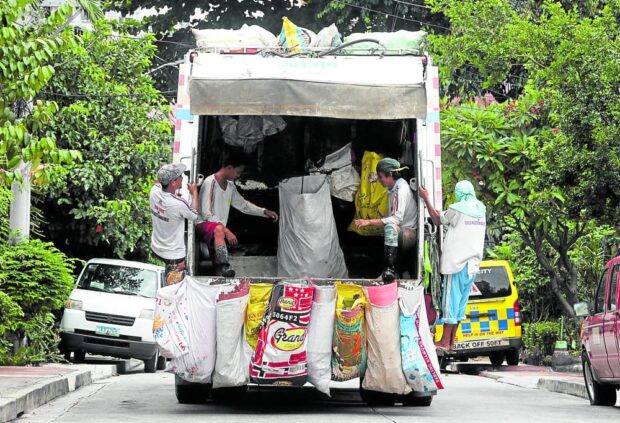
COSTLY HAULERS With still only a minority of Filipino households engaging in composting, recycling and segregation of garbage—and with the use of plastic packaging still the norm—
trash collection remains a mammoth, billion-peso endeavor especially in the capital region. The Commission on Audit noted how the Metropolitan Manila Development Authority’s budget
for haulers—like this one photographed in Cubao, Quezon City, on June 23—has been growing each year. —NIÑO JESUS ORBETA
Six out of 10 Filipino households rely on garbage collection and hauling services for solid waste disposal, according to a Social Weather Stations (SWS) survey on garbage management practices.
The survey, which was conducted from March 26 to March 29 but whose results were released by the SWS on Tuesday, showed 64 percent of households saying that garbage trucks collect their trash while 27 percent dispose of their refuse by burning.
Nine percent of the households bury solid waste in the ground, while 8 percent dump their garbage in an open pit but do not burn it.
Composting, segregation
Four percent said they have other methods, such as composting, feeding food scraps and kitchen waste to animals, or throwing their trash into rivers and creeks.
The survey also found that 61 percent of households frequently segregate biodegradable waste from nonbiodegradables. Of the 61 percent, 44 percent say they “always” segregate waste while 17 percent said they just do it “often.”
A fifth, or 20 percent of households, segregate solid waste “sometimes,” and another 20 percent say they never segregate at all.
The SWS survey used face-to-face interviews with 1,200 household heads and had a margin of error of plus-or-minus 2.8 percent.
—Nathalie Grace Adalid, Inquirer Research
READ:
DENR seeks 100% nod of LGUs on solid waste management plans